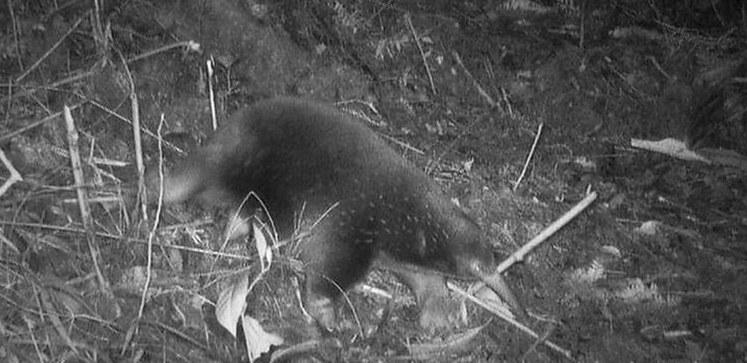Explore the groundbreaking expedition by Oxford University researchers, capturing the first-ever footage of the thought-to-be-extinct Attenborough's echidna in Indonesia. Delve into the significance of this rediscovery, the challenges faced, and the rich biodiversity revealed in the unexplored Cyclops Mountains.
Introduction: In a triumphant revelation, scientists from Oxford University have shattered the belief that the Attenborough's echidna, named after the renowned Sir David Attenborough, was extinct. For the first time, footage of this ancient spawning mammal has been captured during an expedition to the Cyclops Mountains in Indonesia. This article unravels the awe-inspiring journey of discovery, highlighting the significance of this finding and the vibrant biodiversity unearthed in the heart of the rainforest.
Capturing the "Living Fossil": Attenborough's Echidna on Film
In a cinematic moment, researchers led by Dr. James Kempton successfully filmed Attenborough's long-beaked echidna, dispelling the notion of its extinction. The expedition, undertaken in the uncharted Cyclops Mountains, yielded four precious three-second clips, showcasing the spiky, furry, and beaked creature that has earned the moniker of a "living fossil." The echidnas, believed to have originated around 200 million years ago, have emerged as a testament to the resilience of ancient life forms.
A Species Named and Rediscovered: Zaglossus Attenboroughi
The Attenborough's echidna, formally known as Zaglossus attenboroughi, had been presumed extinct, with the only evidence of its existence resting in a museum specimen of a deceased animal. This rediscovery, captured on camera, not only validates its continued existence but adds a new chapter to our understanding of the Cyclops Mountains' unique ecosystem.

The Expedition's Triumph: A Race Against Time
Dr. James Kempton, a biologist at the University of Oxford, spearheaded the month-long expedition through the rugged rainforest terrain situated 2,000 meters above sea level. The team traversed previously unexplored realms of the Cyclops Mountains, facing challenges and uncertainties. The groundbreaking moment, as captured on the last SD card of the last camera on the final day, resonated with enthusiasm and marked a triumph against the ticking clock.
Correspondence with Sir David Attenborough: Shared Delight in Rediscovery
Dr. Kempton, in correspondence with Sir David Attenborough, expressed his elation at the rediscovery of the mammal named in the naturalist's honor. The eminent broadcaster and natural historian shared in the excitement, emphasizing the significance of preserving and understanding species critical to the ecological tapestry of our planet.
Biodiversity Unveiled: Beyond Attenborough's Echidna
The expedition's success extends beyond the rediscovery of the Attenborough's echidna. In the heart of the Cyclops Mountains, the researchers uncovered new species of insects and frogs, shedding light on the richness of biodiversity thriving in this remote habitat. Healthy populations of tree kangaroos and birds of paradise further underscore the ecological importance of this pristine rainforest.
Echidna's Unique Trait: Mammal that Lays Eggs
Highlighting the uniqueness of the echidna, it stands alongside the duck platypus as one of the few mammals capable of laying eggs. Within the echidna family, the Attenborough echidna and the western echidna face critical endangerment, emphasizing the need for conservation efforts to protect these extraordinary creatures.
Conclusion: A Resilient Echo from Earth's Ancient Past
In conclusion, the rediscovery of Attenborough's echidna echoes as a resilient testament to life's endurance. The footage captured during the expedition not only challenges assumptions but opens new doors for scientific exploration and conservation. As we unravel the mysteries hidden within the Cyclops Mountains, the importance of preserving these ancient life forms becomes a clarion call for environmental stewardship and the safeguarding of Earth's precious biodiversity.

Comments